|
Insects In Livestock Feed And Hay
LEXINGTON, KY.
Insects show great promise AS sustainable food sources for fish, poultry, and swine. Some species can efficiently convert organic waste to nutritional supplements while significantly reducing its mass and making it unsuitable as a breeding site for pests.
However, insects and mites IN livestock feed are a different matter. Their activities can reduce nutritional quality, acceptability, and palatability of feed. In addition, some may serve as hosts for internal parasites. Early recognition of arthropod infestations in feed may prevent establishment of chronic infestations, further spread of the pests, and additional feed loss. Often, the best short-term recourse is to destroy infested feed and implement strong sanitation and prevention practices to prevent a recurrence.
Here is a look at some of the insects and a mite that can be found in livestock feed.
Potential Pests
Borers
Rice (Figure 1) and granary weevils develop in grain kernels, causing significant problems in farm-stored corn. The grub-like larvae of these insects develop inside kernels. Their feeding and tunneling (Figure 2) can result in about a 7 percent weight loss over a 90-day period along with production of vast amounts of “flour” within the grain mass. The “flour”, composed of insect eggs, waste, fines, and shed exoskeletons, may make serve as food for other insects, as well as making grain unpalatable. In addition, laboratory research has shown that weevils can contribute to the increase of the Aspergillus flavus fungus and aflatoxin production in infested corn. Metabolic activity of the weevils increases the moisture content of grain. This favors the fungus, and the weevils can carry its spores as they move through the grain mass.
Mealworms, bran bugs, mites, and fungus beetles
Mealworms (Figure 3) are the wireworm-like larvae of insects known as darkling beetles. These insects can be found in processed feed and cracked grains. The larvae and adults (Figure 4) feed on cracked grain kernels, fines, and processed feeds. In addition, darkling beetles have been implicated as intermediate hosts of some poultry parasites. The insects live in around feed rooms, feed bunks, and also may be found in stored hay. Both the adults and larvae avoid light and prefer to hide in or under things, so infestations may not be noticed until relatively large numbers of insects are present.
Horse owners who find dark beetles around stables and haylofts are legitimately concerned that the insects may be toxic blister beetles. Fortunately, it is easy to distinguish between the two (Figure 5).
Bran bugs (Figure 6), like mealworm beetles, feed on cracked kernels and fines. Large numbers of dead beetles, their cast larval exoskeletons, and fecal pellets produce “flour” similar to that from weevils. Their metabolic water contributes to grain heating and spoilage. In addition, the beetles produce quinones, that can give feed a pungent odor. Similar in appearance, small red-brown fungus beetles can thrive in moldy grain and feed. Sweet feeds are particularly prone to infestations of these insects and the tiny grain mite.
Grain mites (Figure 7) thrive under warm, humid conditions. Infested grain or bags of spoiled feed often have a disagreeable musty odor and are covered with a fine “dust” of living and dead mites. People handling this material may develop dermatitis resulting from mite “bites”. In times past, this condition was called” grocers itch”, a malady suffered by those who regularly handled infested bags of meal or flour.
Scavenger insects can infest silage and spoiled hay. Soldier fly maggots (Figure 8) were reported last week from silage in a ground bunker. These fly larvae are common scavengers in wet compost piles and other decaying organic matter. They are an indication of very wet conditions and their activity would liquify the material even further.
Potential Consequences
Insects are not uncommon in feed. Consumption of a few should not pose a threat to livestock.
If only a relatively small number of beetles is present and the feed or grain is in good condition, it may be practical to feed it. Then, thoroughly clean and treat the storage area and surroundings with an appropriately labeled insecticide before refilling.
However, the responses of animals to different insects can vary. Ingestion of significant numbers could cause gastric distress for some animals. Long-term infestations of large numbers of insects can result in significant loss of feed quality, condition, or palatability. The feed odor or taste may make it unacceptable.
Management
Sanitation is the important first step to take when dealing with infestations. Use a broom and shop-vac can be used to clean cracks and crevices. The goal is to remove accumulations of fines and hidden insects. Infestations can develop from small numbers of insects or mites that are not removed or killed.
Appropriately labeled pyrethrins or pyrethroid insecticides can be used to after clean up and before new grain or feed is added. Do not treat feed or grain directly with these products. ∆
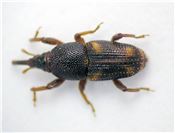
Figure 1. The 1/8-inch long rice weevil is easily recognized
by its long snout and 4 orange spots on its back.
They can be seen crawling through infested grain.
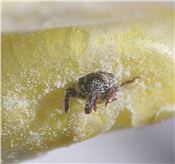
Figure 2. Rice weevil emerging from a hollowed corn kernel.
Note dusty “flour” on the kernel.

Figure 3. Mealworms are the active wireworm-like
larvae of darkling beetles
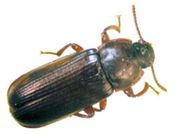
Figure 4. A darkling beetle (tenebrionid)
is the adult stage of mealworms.

Figure 5. Blister beetles (left) have a distinct narrow “neck” segment
immediately behind the head. The darkling beetles’
“neck” is much wider than the head.
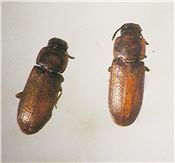
Figure 6. Bran bugs or flour beetles are 1/10-inch long flat beetles.
Photo: Lee Townsend, UK
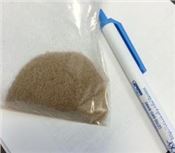
Figure 7. Grain mite infestations generally are discovered as a pile
of pinkish “dust” on infested bags or on the surface of moldy,
infested feed or grain.
Photo: Daviess County Extension
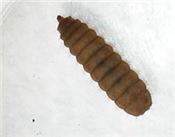
Figure 8. Soldier fly maggot
Photo: Lee Townsend, UK
|
|